Magic Leap's Big Reveal Only Prompts More Questions
$1.9 billion dollars and six years in, Magic Leap has revealed its first product, and yet we still have more questions than we do answers. The Magic Leap One: Creator Edition has arguably been one of the most hotly-anticipated – and certainly controversial – wearables in the new age of mixed and augmented reality. Problem is, just like the virtual graphics it promises to overlay atop our vision, we're still not quite sure what we're looking at.
Founded in 2010, Magic Leap has been in some various of stealth mode ever since as it attempts to commercialize its virtual retinal display technology. Dubbed "Digital Lightfield," the claim is that by blending digital light at different depths, Magic Leap can fool the eye and brain into processing virtual objects and characters as they do real-world versions. Coupled with a sensor suite that can map the physical environment so that virtual objects interact with it more naturally, and you have an AR headset with plenty of potential.
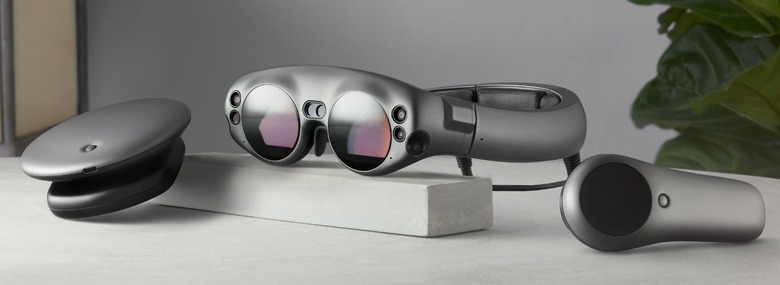
You also have a headset with plenty of questions. Magic Leap has been teasing video experiences of what the headset could do for some time now, as well as allowing a few people in through the doors to try prototypes out for themselves. Problem is, while those lucky few can wax lyrical about how convincing the AR is, they've been simultaneously gagged by non-disclosure agreements to prevent them talking about the hardware and other specifications.
Little on that front has changed today. Magic Leap may have shown us what the first iteration of its headset – targeted, as the "Creator Edition" name suggests, at early developers – looks like, but hard details are in short supply.
Just how much virtual display does Magic Leap One offer?
In an ideal world, transparent display would mean that everywhere you look in the space around you, digital graphics could be overlaid. Sadly, even with Magic Leap's fancy light field photonics system, that's still beyond the capabilities of the new headset. In short, not everything you can see will be able to be digitally manipulated.
It's called field-of-view (FoV) and it's a big issue in today's augmented and mixed reality wearables. Microsoft's HoloLens, for instance, is an impressively self-contained Windows 10 computer with transparent displays, but those screens only cover a fairly small fraction of the overall view. Turn your head, and any virtual graphics you've been looking at directly ahead of you are quickly lost.
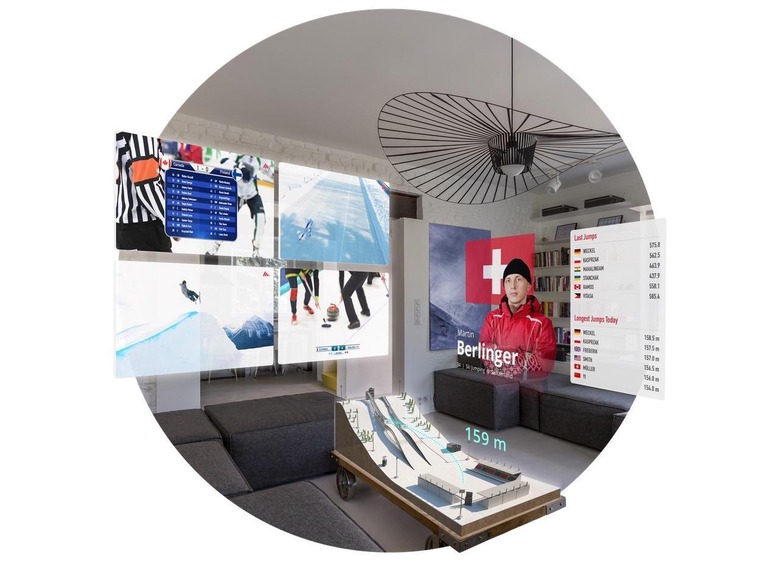
Magic Leap isn't talking about exact FoV numbers at this point, which makes like-for-like comparisons with HoloLens and other AR headsets tricky. According to a somewhat vague comparison by Rolling Stone, it's akin to "about the size of a VHS tape held in front of you with your arms half extended" and "much larger than HoloLens" offers. Bonus points if you actually have a VHS tape on-hand to try that comparison yourself.
There are two main ways Magic Leap appears to be dealing with the limited FoV, beyond the promise that it's already working on versions with significantly larger field of view. On the one hand, there's persistence of vision: digital objects you place in the virtual space are remembered, and reappear when you look to them again. If you mount a virtual screen on the wall of your office and then leave the room, for example, it'll be in the exact same spot when you come back.
The other fix is a little akin to foveated rendering on VR headsets. Developers will apparently be able to fade the edges of their virtual content, rather than have it end abruptly. That will help the brain – which already deals with the eye's sharp drop in clarity off-center – "fill in the gaps" automatically, according to Shanna de Luliis, senior technical marketing manager at the company.
How powerful is Magic Leap One?
Right now, the VR/AR/MR headset world is split into two camps. On the one hand, there are untethered models like HoloLens, which carry all their processing power onboard. On the other, tethered headsets rely on external processing, such as a cable to a nearby PC. The benefit to the former is freedom to move around; for the latter, it's the possibility of greater processing grunt from a larger computer, along with a constant supply of power.
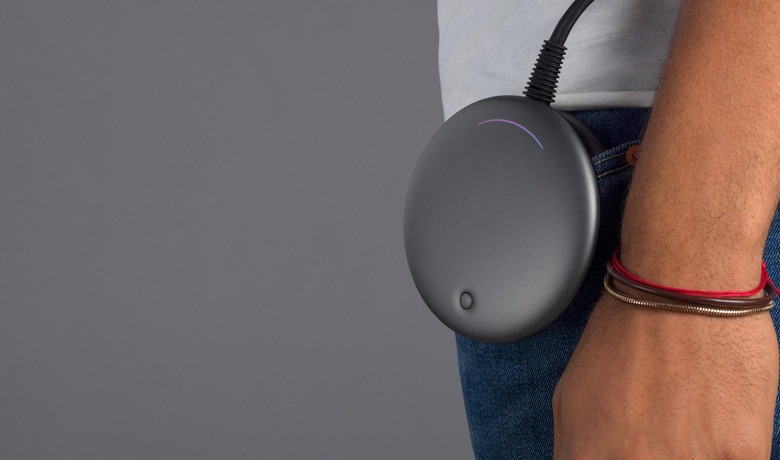
Magic Leap One straddles the two camps. Its Lightwear headset isn't entirely self-contained, relying on a "Lightpack" processing and battery unit that's designed to be worn on a belt or shoulder strap. According to company founder Rony Abovitz, we can expect similar power to a MacBook Pro or Alienware PC from the box.
That still leaves more questions than answers. For a start, we've no idea whether the Lightpack is based on x86 or ARM; on off-the-shelf silicon or something the company has designed itself. Mobile chipsets have made huge advances in recent years when it comes to graphics potency – not for nothing are autonomous car platforms often based on ARM chips from NVIDIA and others, relied upon for doing huge amounts of GPU-accelerated calculation – but visually-rich VR headsets like Oculus Rift and HTC VIVE still usually demand a desktop-spec video card.
Given the specialized nature of Magic Leap's lightfield system, a custom approach seems likely. All the same, the form-factor of the Lightpack will have clear limitations on just how much processing power it can provide. That is, without falling foul of the topic of our next big question.
How long will Magic Leap One's battery last?
Battery life is the headache of most wearable devices. HoloLens, for instance, will run for up to around 5.5 hours during "average" use, but more intensive 3D rendering and such – typical demonstrations Microsoft likes to show – could see it last for less than half that. Even smartphone-based VR experiences, like Samsung's Gear VR or Google's Daydream, can have a significant impact on the battery life of the handset powering them.
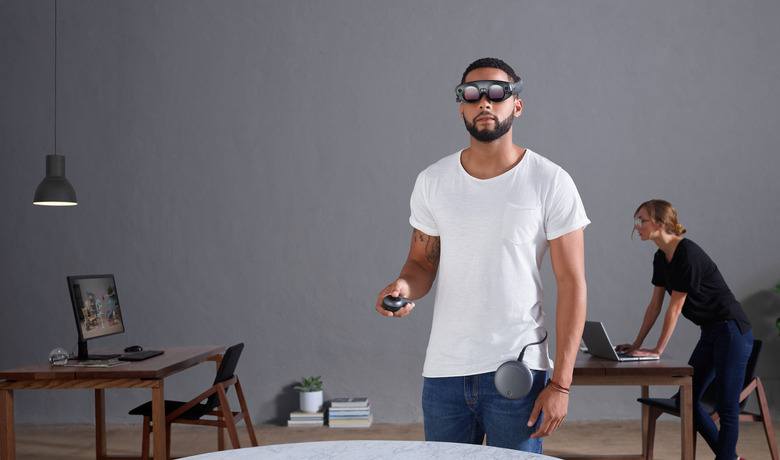
For Magic Leap, that begs the question: just how long will the Magic Leap One actually last? The company could theoretically put batteries in both the Lightwear and the Lightpack, but it can't go too far as it still needs space for all the sensors, cameras, and computing hardware. Not to mention, if the system overall is too heavy, people simply won't want to wear it. It's notable that nobody at the company is giving any sort of indication as to how long the headset will last for.
Who exactly is Magic Leap's target audience?
There's another factor influencing all of this: just who Magic Leap One is aimed at? Again, the market has generally sorted itself into two camps already. At one extreme you have the entertainment-first products, like Oculus Rift and HTC VIVE, which focus on gaming and immersive experiences.
At the other, you have start-ups like Meta, who are positioning mixed-reality as a replacement for the laptop or desktop computer. Meta's vision is in many ways similar to what Magic Leap has been talking about, offering users a theoretically infinite number of virtual displays with which they can fill their world.

It's unclear how much time we're expected to be spent wearing the Magic Leap One each day. The headset is less clunky than a Meta or HoloLens – at least going by what appear to be the rendered designs the company has shown off today – but still, it's hardly discreet. These aren't the subtle eyewear replacements we've been promised by science-fiction novels, constantly overlaying the world around us with whispers from an AI companion.
At the same time, Magic Leap doesn't appear to be pushing the headset as a standalone "experience": something you don to go through a game, or on a virtual trip, and then take off to return to your real life. Again, it comes down to battery life and what early developers choose to create for the platform, both details that are in short supply.
How much will Magic Leap One cost?
If there was one question we were hoping to have answered today – though didn't really expect – it's price. Magic Leap has said that the Creator Edition of its headset will ship sometime in 2018, but isn't talking publicly about how much that will cost. It's that which could make or break the platform.
HoloLens, for instance, is currently priced at $3,000 for its development edition. The latest Meta 2 AR development kit, meanwhile, is $1,495. Neither could be described as especially affordable, though to be fair neither is targeted at a mainstream consumer, but rather the developers making apps for each platform.
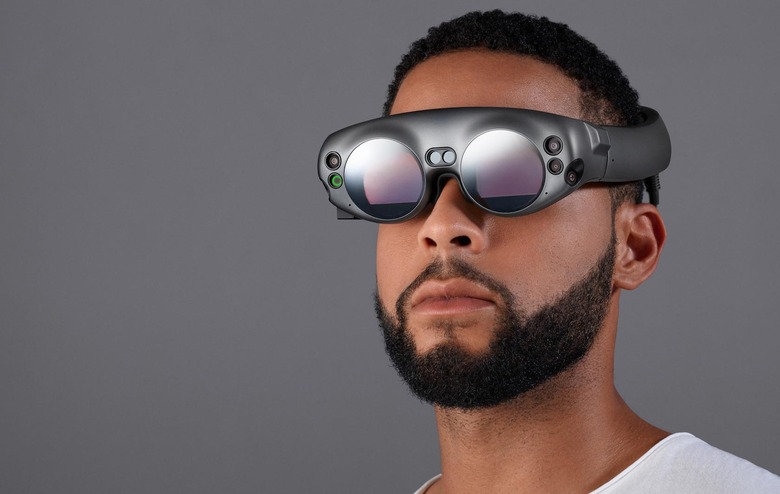
So, really, there are two questions here. First, can Magic Leap make the headset sufficiently attainable that it's within the reach of the developers it needs to create its lightwave experiences. Second, can the subsequent consumer Magic Leap headset be priced within the reach of the typical mixed-reality early adopter, already something of a rare breed.
Wrap-up
It's exciting times in the mixed-reality space right now. We're finally seeing some of the familiar tropes from sci-fi playing out into real products, with plenty of rumor and speculation that some of the other big names in consumer tech are weighing their own entrance into the segment. Apple, for instance, is tipped to be working on its own AR glasses that we could potentially see as early as 2019.
What Magic Leap has shown us today, therefore, is intriguing. All the same, we're still a long way from any sort of commercial release, or even an opportunity to try out its technology for ourselves. Here's hoping 2018 sees Magic Leap One getting a little more "real" and a little less "virtual" than it is today.
